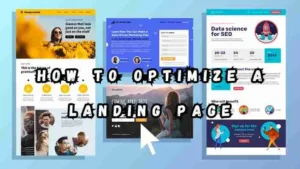
Why You Need Target Audience Research in Paid Media?
Having great content isn’t enough if you don’t have an engaged audience who’s ready to buy your products and services. The number of ads that fail to engage their target audience is estimated at $37 billion each year. But don’t let that figure scare you into never launching an ad campaign.
The use of audience research when running paid media campaigns can amplify your results. By communicating directly with your target audience’s pain points, deep purchase motivations, and guiding them to make a purchase decision, this approach allows you to connect with them.
WHAT IS THE IMPORTANCE OF TARGET AUDIENCE RESEARCH?
By gathering data and feedback on the reasons people buy, you can build a creative strategy that sets the foundation for success. Audience research helps you identify who to advertise to and how to speak to them directly.
Researching and targeting your audience will help you discover new ways of advertising as you develop your targeting and audience research strategies. The prestige of a higher education institution may be a key factor in a student’s decision to enroll in an MBA program, but you might discover that remote and virtual learning opportunities are more compelling to them. You can then use this insight to tailor your copy and ads.
A team of our writers uncovered what the most important factors are when deciding whether to buy a new bathtub. After all, it’s not the same as replacing a roof or an appliance when it fails.
It turns out that there was a whole segment of the audience that prioritized bathroom remodels to prevent slip and falls in older parents. Our team then devised a campaign aimed at that group in our client’s local area based on this insight. We have already seen a 10% increase in click-through rates for the campaign, indicating that our messaging is hitting home with this group despite still being in its infancy.
HOW TO RESEARCH YOUR TARGET AUDIENCE
The following methods and best practices are proven to help you find your target audience:
Review your customers, get feedback and make improvements on your site using customer reviews, comments, and surveys. It’s best to leave responses open-ended while giving context to what kind of information you’re seeking.
In real time, you can uncover your clients’ motivations and decision-making process through one-on-one interactions with them. Further questions can be asked during your discussion with them.
Using social media channels and online reviews, you can determine how your competitors are appealing to their audiences.
By studying industry leaders and how their customers interact with their content, you can gain insight into the macro influences that persuade consumers.
Research demographics – Using demographic insights in conjunction with customer feedback is an effective way to tailor your messaging to different audience personas.
You can get a good idea of who your buyers are from an ad platform, but you can’t get a sense of “why” behind their purchases from an ad platform. Consequently, you must pair your campaigns with research tools to strengthen your understanding of purchasing motivations, such as user testing, focus groups, review mining, and other workflows. We develop a testing framework for messaging and images to scale and optimize our campaigns using these tactics to identify overarching “themes.”
A creative strategy can also be helpful in addressing these challenges, since more marketing and ad platforms are going towards automation, so you may be unable to deliver authentic marketing efforts if you rely solely on automation. In order to better understand their target demographics, businesses can use creative strategies to appeal to their audience’s motivations. A marketing approach such as this increases the effectiveness of marketing efforts and ensures they resonate with the target audience.
Regardless of your targeting strategy, your creative has the potential to surpass your competitors even if your target audience is more general.
AUDIENCE RESEARCH PER PLATFORM
Your choice of advertising platform depends on your ability to use data to inform your decision. Researching the audience of each platform and the analytics tools available to analyze that audience is essential to determining which platform is right for your goals by using insights gained from this research. You would be better off using Facebook/Meta Ads if you wanted to market a programming or accounting course for 35-50-year-olds on an online learning platform.
As a marketing tool, LinkedIn may prove beneficial for reaching segments of your audience that are interested in directly purchasing courses, or businesses who are looking for ways to offer employees development opportunities.
AUDIENCE RESEARCH FOR FACEBOOK/META ADS

After you’ve determined that your target audience is on Facebook/Meta, use Meta’s targeting options to build your campaigns. Consider creating campaigns around:
- Women and men
- An age range
- Educating
- Occupational titles
- Affiliation status
- Interests
- Affiliations
- Personality types
In spite of the fact that these levers can be used to target your audiences, reporting on individual segments is more challenging. Meta’s platform does not provide extensive audience reporting, making it difficult to determine whether your concepts are working.
A solid understanding of your audience and their behaviors is crucial to overcoming this problem. Identify the success metrics that are most important for you in your campaigns, including engagement rate, click-through rate, and conversion rate. You will be better equipped to come to a solid conclusion when it comes time to evaluate the performance of your campaign or audience if you have a clear goal in mind.
HOW TO FIND YOUR AUDIENCE ON TWITTER
By focusing on the following, you can find your Twitter audience, just like you can on Facebook/Meta:
- Address
- The language
- Targeting based on age and gender
Data-driven audience insights, conversion tracking, and the Business Insights Dashboard are some of the tools Twitter provides to help you understand your audience. This information can be used to increase the engagement of your tweet while also tracking the return on your ad spend. As well as providing a comprehensive overview of your followers and impressions, your Business Insights Dashboard offers personalized tips for optimizing your content.
APPLYING AUDIENCE RESEARCH TO GOOGLE ADS

Researching your audience is just as important when it comes to Google Ads as it is for social media ads. You can implement your Google campaign effectively if you gather insights about your target audience’s age, demographics, interests, hobbies, and engagement behaviors.
Your ad campaign can be targeted to specific demographics and purchase intents, using Google’s range of tools to help you reach the right customers. It is possible to uncover new audience segments as you run your campaigns, such as a young demographic in another part of the country, that you previously didn’t consider.
TESTING AUDIENCE RESEARCH CAMPAIGNS
The only thing that matters is testing those ideas to ensure you’ve done your due diligence in finding what resonates with your target market. A great idea does not scale into success if it is just an idea. We usually start with a data-driven foundation. Our team prioritizes what our target audience finds most appealing about our solution. What makes them buy when they are ready to buy?
In order to brainstorm original concepts and A/B variations, we examine current trends and identify two to three overarching themes within our target market. The success metrics vary based on the client and the project’s goals. The question is whether the test can be concluded, and if so, how to incorporate a brand-new concept or variant to compete with the winner.
Testing multiple variables at once could confuse the data and make it difficult to determine the effectiveness of your tests even with a solid foundation based on research.
With Techqubix, we realize our campaigns are a series of calculated “bets,” with the expectation that some will succeed, while others may fail. We follow an 80% iteration vs. 20% innovation rule, focusing on implementing new and innovative ideas about 20% of the time while improving on what’s already working. We are able to scale and optimize our campaigns for maximum impact and results by consistently implementing and refining this rinse-and-repeat process. We are able to use this approach to take calculated risks while leveraging proven strategies, ensuring that our strategies are always pushing the boundaries of what’s possible while also maintaining a strong foundation of success.
Our tests are complete only after they meet the client’s goals for the campaign by analyzing engagement metrics, such as click-through rate or return on ad spend, and considering statistical significance thresholds.


